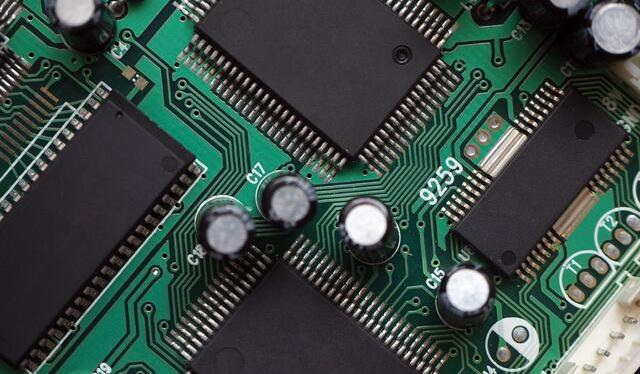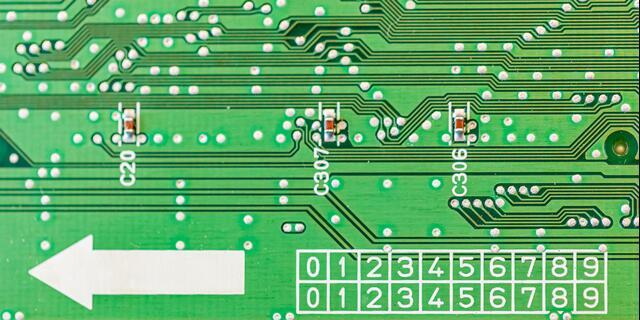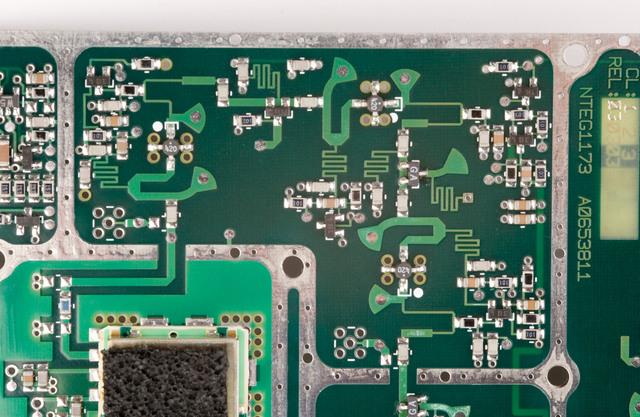Content Menu
● Understanding SMT Splice Tape
>> Key Features of SMT Splice Tape
● Benefits of Using SMT Splice Tape
● How Precise Pitch Spacing Enhances Assembly
● Applications of SMT Splice Tape
● Best Practices for Using SMT Splice Tape
● Challenges in Using SMT Splice Tape
● Future Trends in SMT Splicing Technology
● Case Studies Highlighting Successes with SMT Splice Tape
>> 1. Case Study 1: Consumer Electronics Manufacturer
>> 2. Case Study 2: Automotive Supplier
>> 3. Case Study 3: Industrial Equipment Manufacturer
● Conclusion
● FAQ
>> 1. What is the primary purpose of SMT splice tape?
>> 2. How does precise pitch spacing affect PCB assembly?
>> 3. What are the advantages of using automatic splicing machines?
>> 4. Can SMT splice tape be used with different types of carrier tapes?
>> 5. What best practices should be followed when using SMT splice tape?
Surface Mount Technology (SMT) has revolutionized the way electronic components are assembled onto printed circuit boards (PCBs). A critical aspect of this process is the efficient joining of component reels, which is where SMT splice tape comes into play. This article explores how SMT splice tape with precise pitch spacing enhances PCB assembly, focusing on its benefits, applications, and best practices.

Understanding SMT Splice Tape
SMT splice tape is a specialized adhesive tape designed to join two reels of surface mount components seamlessly. It is typically made from high-quality materials that ensure a strong bond while being flexible enough to allow smooth movement through automated assembly equipment. This tape comes in various sizes and types, including single-sided and double-sided options, catering to different assembly needs.
Key Features of SMT Splice Tape
- Pre-Cut Lengths: SMT splice tapes are available in convenient pre-cut lengths, ensuring that the joining process is quick and efficient.
- Double Embossed Dots: Many splice tapes feature double embossed dots that facilitate easy alignment during application, minimizing the risk of misalignment.
- Compatibility: These tapes are compatible with various SMT machines and can be used for both paper and plastic carrier tapes.
Benefits of Using SMT Splice Tape
The use of SMT splice tape in PCB assembly offers numerous advantages:
- Increased Efficiency: By allowing for continuous production without interruptions, SMT splice tape significantly boosts operational efficiency. This means that when one reel runs out, the next can be quickly joined without halting the assembly line.
- Cost Savings: Reducing downtime associated with reel changes leads to significant cost savings. Manufacturers can maintain higher output rates and reduce labor costs related to manual splicing methods.
- Improved Accuracy: Automated splicing techniques ensure that components are joined with high precision. This accuracy results in consistent placement on PCBs, reducing the likelihood of defects and enhancing overall product quality.
- User-Friendly Application: The design of SMT splice tapes makes them easy to apply without the need for additional tools or fixtures. This simplicity allows operators to focus on other critical aspects of the assembly process.
How Precise Pitch Spacing Enhances Assembly
Precise pitch spacing refers to the exact alignment of components on a carrier tape, which is crucial for effective placement during PCB assembly. The integration of SMT splice tape with precise pitch spacing offers several enhancements:
- Consistency in Component Placement: With precise pitch spacing ensured by the splice tape, components are consistently positioned on the PCB. This uniformity is vital for maintaining the integrity of electronic circuits and reducing errors during soldering.
- Reduced Risk of Misfeeds: Accurate alignment minimizes the risk of misfeeds in pick-and-place machines. When components are correctly spaced, the machines can operate more smoothly, leading to fewer disruptions and higher throughput.
- Streamlined Production Flow: By ensuring that component reels are joined seamlessly with precise pitch spacing, manufacturers can achieve a more streamlined production flow. This contributes to faster turnaround times and improved overall productivity.
Applications of SMT Splice Tape
SMT splice tape is widely used across various sectors within electronics manufacturing:
- Consumer Electronics: In devices such as smartphones and tablets, where compactness and efficiency are paramount, SMT splice tape ensures that assembly lines operate continuously without delays.
- Automotive Electronics: The automotive industry relies heavily on precision and reliability. SMT splice tape helps maintain high standards in component placement for critical systems like safety features and infotainment systems.
- Industrial Equipment: For industrial machinery that requires robust electronic controls, using SMT splice tape allows for efficient assembly processes that meet stringent performance requirements.

Best Practices for Using SMT Splice Tape
To maximize the benefits of SMT splice tape in PCB assembly, manufacturers should adhere to several best practices:
1. Quality Assurance: Invest in high-quality splice tapes to minimize risks associated with blockages and misfeeds. High-quality materials ensure better adhesion and durability during operation.
2. Proper Training: Ensure that personnel are well-trained in splicing techniques and familiar with best practices for using SMT splice tape. This training helps maintain consistency and accuracy throughout the assembly process.
3. Regular Maintenance: Keep splicing tools and machines well-maintained to ensure optimal performance. Regular checks can prevent issues that may arise from wear and tear.
4. Monitoring Systems: Implement monitoring systems that provide real-time feedback on splicing effectiveness and component flow. This data can help identify areas for improvement in the assembly process.
5. Adherence to Guidelines: Follow established guidelines for splicing techniques to avoid common pitfalls such as misalignment or improper application of the tape.
Challenges in Using SMT Splice Tape
While SMT splice tapes offer numerous benefits, there are challenges associated with their use:
- Initial Costs: High-quality SMT splice tapes may come at a higher initial cost compared to traditional methods. However, this investment often pays off through increased efficiency and reduced downtime.
- Training Requirements: Effective use of SMT splice tapes requires proper training for operators to avoid errors during application. Ensuring that staff is well-trained can mitigate potential issues related to misalignment or improper splicing techniques.
- Environmental Factors: Factors such as temperature and humidity can affect adhesive performance. Manufacturers must choose appropriate tapes designed for their specific environment to ensure optimal results.
Future Trends in SMT Splicing Technology
As technology continues to advance, several trends are emerging in the field of SMT splicing:
- Automation Integration: Increasingly automated solutions are being developed to further streamline splicing processes, reducing manual handling and improving efficiency.
- Smart Technology Features: The incorporation of sensors and connectivity options into splicing tools may allow for real-time monitoring and diagnostics, enhancing operational oversight.
- Sustainability Initiatives: There is a growing focus on developing eco-friendly materials for splice tapes to minimize environmental impact while maintaining performance standards.
Case Studies Highlighting Successes with SMT Splice Tape
To illustrate the practical advantages of using SMT splice tape with precise pitch spacing, consider these case studies from leading electronics manufacturers:
1. Case Study 1: Consumer Electronics Manufacturer
A prominent consumer electronics manufacturer implemented SMT splice tape in their production lines for smartphone assembly. By switching from manual splicing methods to automated splicing using high-quality tapes, they achieved a 25% reduction in downtime during reel changes. The enhanced accuracy also led to a 15% decrease in defects related to component placement errors over six months.
2. Case Study 2: Automotive Supplier
An automotive supplier faced challenges with component misalignment in their electronic control units (ECUs). After adopting precise pitch spacing through advanced SMT splice tapes, they reported a significant improvement in production flow efficiency by 30%. The reduced misalignment not only improved product quality but also enhanced customer satisfaction due to fewer recalls related to electronic failures.
3. Case Study 3: Industrial Equipment Manufacturer
A manufacturer specializing in industrial machinery incorporated SMT splice tape into their assembly process for control panels. They noted an increase in throughput by 40% after implementing automated splicing techniques combined with precise pitch spacing methods. The ability to maintain continuous production without interruptions allowed them to meet rising demand without additional labor costs or overtime expenses.
Conclusion
In summary, adopting advanced technologies such as SMT splice tape not only enhances operational efficiencies but also supports sustainable manufacturing practices by reducing waste through optimized resource usage. As manufacturers continue adapting to market demands—driven by rapid technological advancements—investing in reliable solutions like high-quality SMT splice tapes will be crucial in achieving long-term success within an increasingly competitive landscape.
The integration of precise pitch spacing into PCB assembly processes represents a significant leap forward in ensuring quality control while maximizing production capabilities. By focusing on continuous improvement through innovative practices such as these, companies can position themselves favorably against competitors while delivering superior products to their customers.

FAQ
1. What is the primary purpose of SMT splice tape?
SMT splice tape is used to join two reels of surface mount components together seamlessly, allowing for uninterrupted assembly processes.
2. How does precise pitch spacing affect PCB assembly?
Precise pitch spacing ensures accurate alignment of components on PCBs, reducing errors during placement and improving overall product quality.
3. What are the advantages of using automatic splicing machines?
Automatic splicing machines streamline the joining process with precision, reducing labor costs and minimizing downtime associated with reel changes.
4. Can SMT splice tape be used with different types of carrier tapes?
Yes, SMT splice tape is compatible with both paper and plastic carrier tapes, making it versatile for various applications in electronics manufacturing.
5. What best practices should be followed when using SMT splice tape?
Best practices include ensuring quality assurance through high-quality materials, providing proper training for personnel, conducting regular maintenance on equipment, implementing monitoring systems for feedback, and adhering to established guidelines for splicing techniques.




















